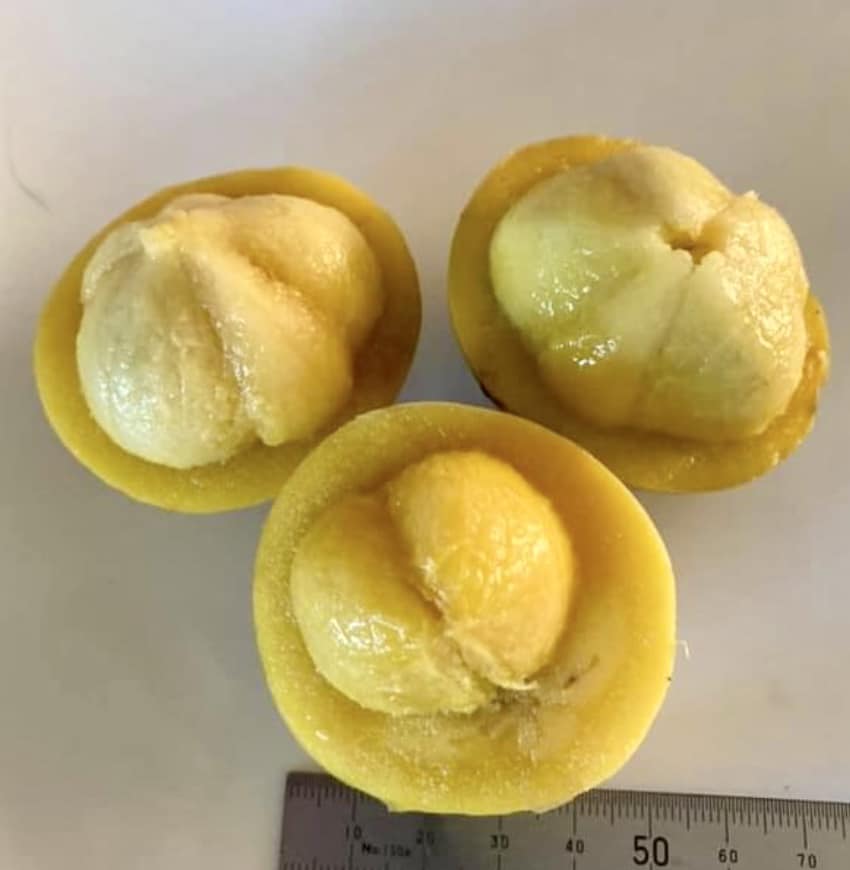Love it? Add to your wishlist
Your favorites, all in one place. Shop quickly and easily with the wishlist feature!
[message]
[title]
[message]


Veliyath Gardens
Couldn't load pickup availability
Hidden in the quiet, humid corners of Southeast Asian landscapes, a modest tree with glossy green leaves and golden-orange fruit has been revered for generations. Known commonly as Mundu, this fruit—botanically named Garcinia dulcis—is more than just an edible delight. With its medicinal value, traditional relevance, and culinary versatility, Mundu holds its place as one of nature’s gentle healers and flavorful gifts.
Belonging to the Clusiaceae family, this evergreen tree is native to the Philippines, Indonesia, and Thailand. Over time, it has found a niche in Indian gardens, too, where it is admired for both its ornamental and therapeutic appeal. With names that vary across regions—Baniti, Goruka, Rata Fruit, and Egg Tree—Mundu continues to win hearts with its glowing hue and distinct sour-sweet flavour.
Botanical Name: Garcinia dulcis
Common Names: Mundu, Baniti, Goruka, Egg Tree, Rata Fruit
Known In Other Countries As:
In the Philippines: Baniti
In Sri Lanka: Rata Fruit
In Indonesia: Goruka
In India: Often called Mundu or Egg Tree in southern regions
This tree, reaching a height of about 10 to 15 feet under ideal conditions, is appreciated as much for its shade and ornamental beauty as for its fruit. With age, it develops a rounded crown, and the fruit begins to form only after four to five years of planting.
Mundu is a moderate-maintenance fruit tree, ideal for warm tropical and sub-tropical climates. It thrives in moist, well-drained soil and prefers partial to full sunlight. The tree is slow-growing in its early stages but becomes a sturdy, bushy presence with time. The dark green foliage provides a beautiful contrast to the bright orange-yellow fruit that hangs in small bunches during the harvest season.
Flowering and Fruiting: Begins around the fourth or fifth year
Fruit Size: Approximately 5 to 8 cm wide, slightly pointed at both ends
Skin Texture: Smooth, thin, pale yellow outer skin
Pulp: Juicy, soft, fibrous, and rich orange in colour
At first bite, Mundu surprises with a sharp tang, but as it ripens, it mellows into a gentle sweetness, reminiscent of tropical citrus. The balance of tart and sweet makes it ideal for both raw consumption and culinary experiments.
Eaten Fresh: Many enjoy the fruit raw, sliced, and lightly salted
Preserved as Jam: Its natural acidity and vibrant colour make it perfect for thick, fragrant jams
Used in Chutneys and Pickles: Regional recipes incorporate Mundu for its sour punch
Infused in Syrups and Juices: It adds zest to summer coolers and traditional sherbets
Its taste is often compared to that of tamarind or green mango, though less sharp and more aromatic. The fruit is also added to local curries to balance spice with acidity.
The Mundu fruit isn't just flavourful—it also carries significant health benefits, making it a prized component in traditional medicine.
Nutritional Profile (per 100g approx.):
Vitamin C: High—boosts immunity and skin health
Fiber: Helps with digestion and gut health
Iron and Potassium: Supports blood health and cellular repair
Natural Acids and Tannins: Aid detoxification and digestion
Medicinal Benefits:
Cough and Respiratory Support: Fruit extracts serve as expectorants
Wound Healing: Crushed bark and resin are applied topically to speed up recovery
Antidote Properties: Roots are used in folk medicine to counteract poisoning
Anti-inflammatory Use: Pounded seeds and bark are applied to swelling
Digestive Aid: Helps regulate bile, ease diarrhea, and control flatulence
Oral Health: Chewing the fruit is known to reduce bad breath and cleanse the mouth
The fruit, especially in its raw form, is used in herbal remedies across Southeast Asia. It has even been used for scurvy treatment due to its high ascorbic acid content.
Mundu is a moderate-maintenance plant, ideal for gardeners who enjoy nurturing their trees. While it requires some attention in the first few years, it rewards well once established.
Planting Tips:
Choose a sunny or partially shaded spot with moist, loamy soil
Water regularly, especially during dry periods, but avoid over-watering
Mulching around the base helps retain moisture and prevent weeds
Use compost or organic manure to enrich soil twice a year
Pruning is not required often, but removing dead or damaged branches annually helps the plant maintain its structure and health.
The fresh fruit should be consumed within a few days of harvesting, especially once fully ripe. It can be kept at room temperature for 3–4 days or refrigerated to extend freshness. When turned into jam or pickle, it preserves well for months. Dried pulp can also be stored in airtight containers for later use in traditional remedies or cooking.
In various parts of Asia, Mundu holds symbolic and practical importance. It is not uncommon for the fruit to be used in offerings during local festivals. Its bark and resin are believed to have spiritual cleansing properties, and it is used in folk rituals to purify and heal.
In regions where it is native, the Mundu tree is often grown near village homes for easy access to its fruit and medicinal parts. The leaves, roots, and gum are traditionally used in household medicine chests, making this tree a functional part of daily life.
Incorporating the Mundu fruit tree into your garden brings a touch of tropical vibrance and timeless utility. Not only does it lend beauty with its canopy and bright fruit, but it also serves as a source of wellness and culinary creativity. Whether you enjoy making your own jams, exploring natural remedies, or simply tasting unique fruits with heritage, the Mundu tree is an enriching addition.
For fruit lovers who seek more than just harvest—for those who value tradition, healing, and sustainability—this tree is a perfect match.
At Veliyath Gardens, we believe in connecting people with plants that carry meaning, history, and health. The Mundu Fruit Plant (Garcinia dulcis) is one such offering—a fruit-bearing tree that reflects centuries of wisdom and the vibrant spirit of the tropics.
Add the Mundu tree to your garden and let its golden fruit illuminate your landscape and your life.
Choose a sunny or partially shaded spot with moist, loamy soil
Water regularly, especially during dry periods, but avoid over-watering
Mulching around the base helps retain moisture and prevent weeds
Use compost or organic manure to enrich soil twice a year
Cough and Respiratory Support: Fruit extracts serve as expectorants
Wound Healing: Crushed bark and resin are applied topically to speed up recovery
Antidote Properties: Roots are used in folk medicine to counteract poisoning
Anti-inflammatory Use: Pounded seeds and bark are applied to swelling
Eaten Fresh: Many enjoy the fruit raw, sliced, and lightly salted
Preserved as Jam: Its natural acidity and vibrant colour make it perfect for thick, fragrant jams
Used in Chutneys and Pickles: Regional recipes incorporate Mundu for its sour punch



